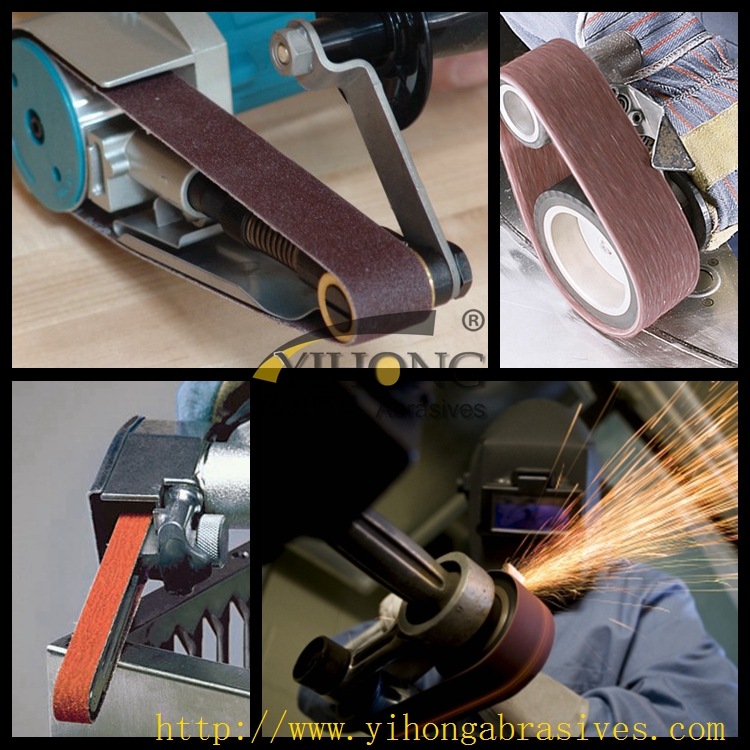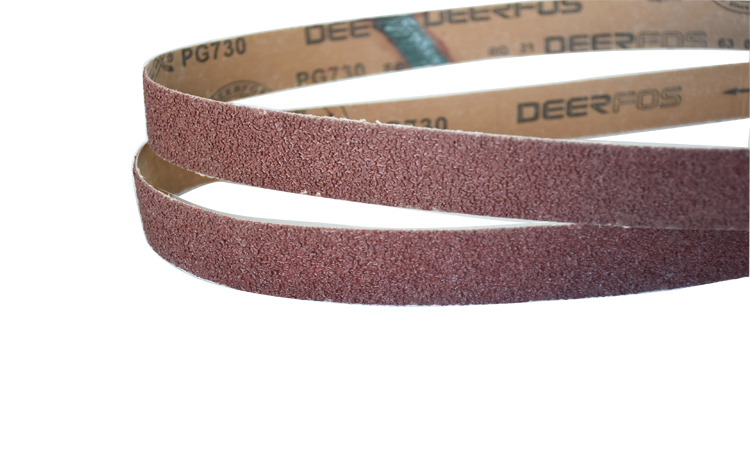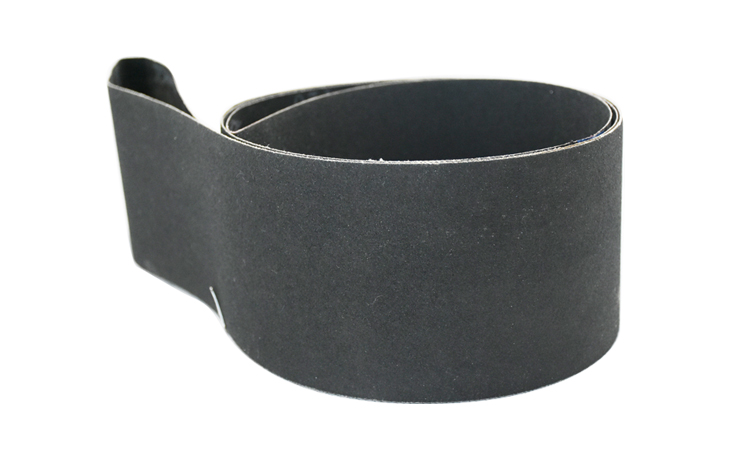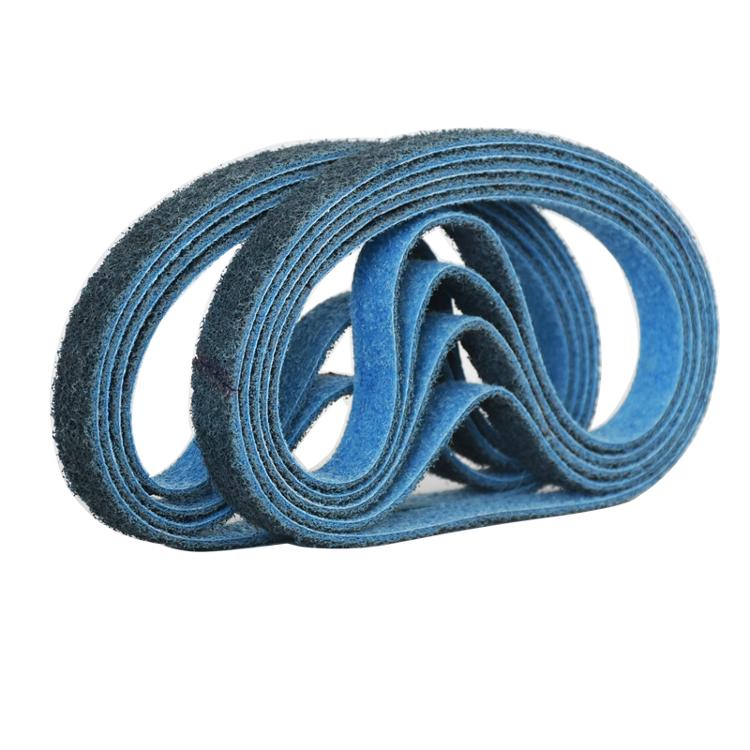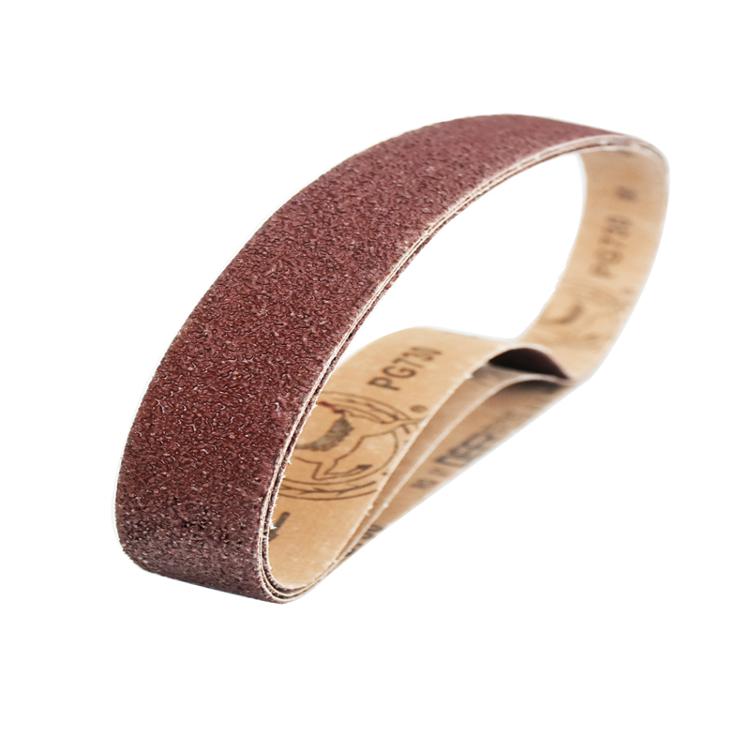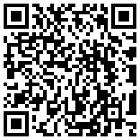
Brief description of the common belt size specifications for abrasive belt grinding
Brief description of the common belt size specifications for abrasive belt grinding
Abrasive belt grinding can process almost all engineering materials, from general household life to industrial production. As a new coating grinding process known as “universal grinding” and “cold grinding”, belt grinding technology has been regarded as an indispensable processing method equivalent to grinding wheel grinding.
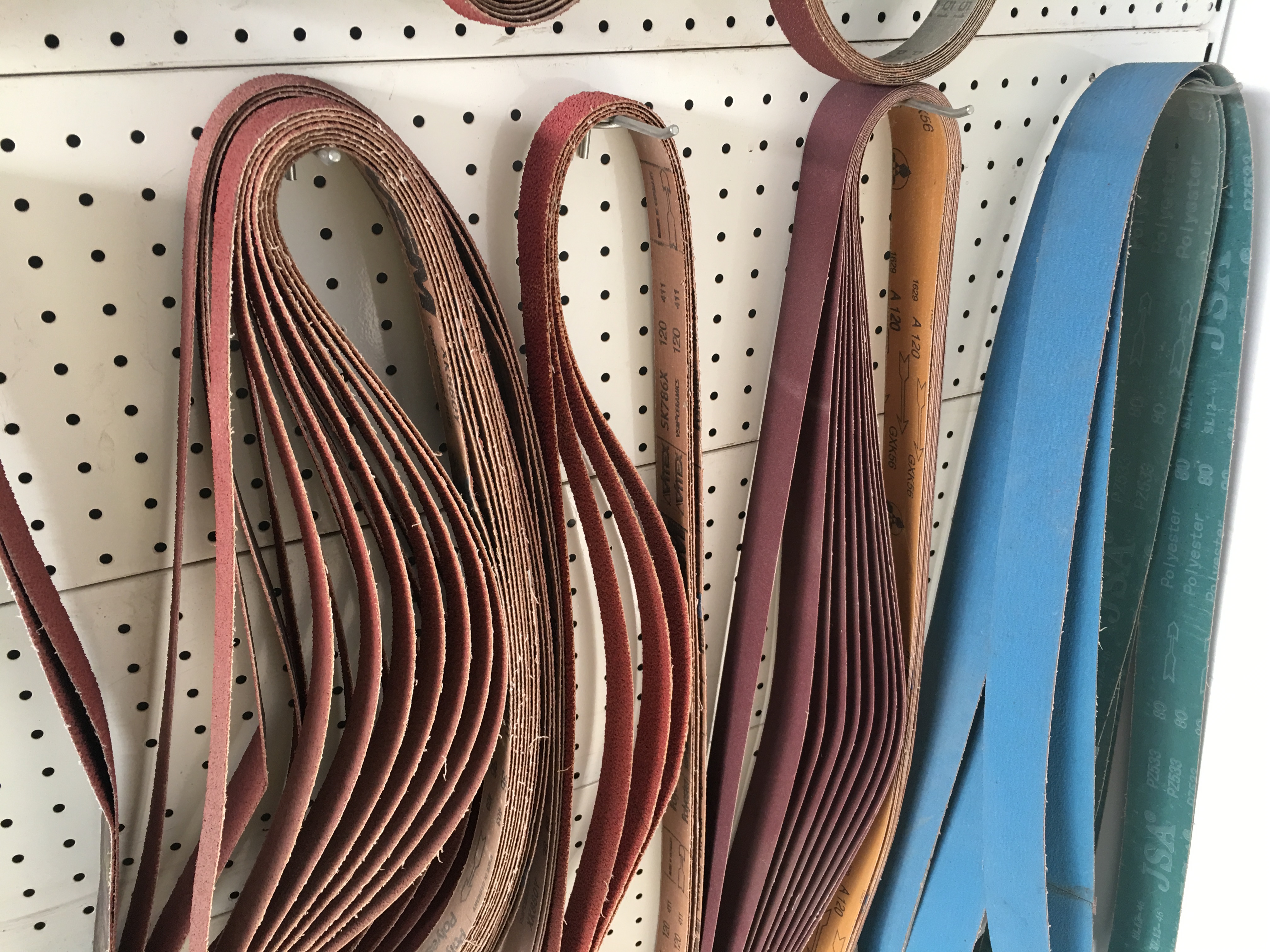
Matrix - cloth base, paper base,
Composite abrasives - natural abrasives - natural corundum, pomegranate
Abrasive belt ordinary abrasive - white corundum, brown corundum, fused corundum, silicon carbide
Superhard abrasive - synthetic diamond, cubic boron nitride
Binder - animal glue, semi-resin, full resin, water resistant product
Structural form - jointless abrasive belt
Joint belt - docking,butt splice, lap joint, etc.
Second, the use of abrasive belt
1. Sheet metal processing industry: original wood, plywood, fiberboard, flower board, veneer, furniture, building materials and others;
2. Metal processing industry: non-ferrous metals, ferrous metals,
3. Ceramics, leather, fiber, paint, plastic and rubber products, stone and other industries.
Belt use field
E.g:
(1) Large-area plate polishing processing. The width of the grinding wheel is only 1000mm, and the belt can be more than 2500mm. In actual use, the common processing width of abrasive belt grinding is 50~2000mm, and the processing thickness is 0.4~150mm. Its productivity is up to 1000m2 / h.
This wide belt grinding can be widely used in steel plates, stainless steel plates, silicon steel sheets, aluminum sheets, copper sheets, particle boards, plywood, medium density fiberboard, leather, insulation boards, ceramic boards and astronauts, ships and nuclear physics research equipment. Surface processing using a variety of high-precision, low-roughness large plates. Intermittent plane precision machining such as engine gearbox section can also be ground once with a wide belt, and it can ensure better sealing than traditional milling and wound surfaces.
(2) Continuous stripping of metal strip or wire. Due to the development of wide belt grinding, the thin strip has the same grinding conditions over the entire width, and local stress is not excessively generated, resulting in stress deformation, so cold rolled steel strip, copper, aluminum strip and other alloy strips The surface of the material is suitable for continuous polishing with a belt. The processing width is 600~2100mm, the processing thickness is 0.1-2.2mm, the surface roughness value is Ra3.2~0.1mm, and the strip running speed is 3~80m/min. Planetary belt grinding provides a very efficient and economical method of processing stainless steel or other materials for coiling and wire. Wire diameters are known to be 0.8 to 20 mm. Continuous running speed is 6~150m/min.
(3) The aspect ratio is large and the inner and outer circle are polished. In the modern industry, the large-scale, long-diameter ratio shaft workpieces and the inner surface of the tubular workpiece are easily machined by abrasive belt grinding. It can generally be achieved by adding a belt grinding device to a large standard equipment. Special belt grinding machines are available for large batch sizes. Such as large generator rotors, rolls, paper dryers and other workpieces outside the circle and cylinders, oil pipelines, pressure vessels and other workpieces on the inner surface of the workpiece.
(4) Complex shaped workpiece polishing. It is difficult to shape and grind a curved workpiece. However, the flexibility of the belt can be used to easily process a variety of complex curved surfaces with a radius of curvature of only 3 mm, and the belt can also be polished. Such as aircraft engine pages, steam turbine blades, navigation blades, condenser lamp bowls, mirrors, cutlery, handles, plumbing appliances, etc. can be used for high-efficiency and high-quality polishing processing with abrasive belts.
Third, the size specifications of the belt
Strictly speaking, the size of the belt is not limited, but from the perspective of ease of manufacture, each manufacturer still determines the size of the belt according to certain standards. It is meaningful for the user to understand the criteria for the size division of the belt. In addition, the use of abrasive belts in accordance with the specified dimensions is also a prerequisite for the development of belt grinding machines to serialization, standardization and modularization.
length
For open belts, the length and width of the belt are proportional. Usually the length to width ratio is in the range of 200:1 to 2000:1. The wider the belt, the lower the ratio, and the upper limit.
width
The belt can be divided into the following categories by width:
Narrow series of abrasive belts: widths between 5 and 50 mm and lengths up to several meters. This narrow belt is widely used, including hard-to-reach parts of some parts, such as scissors and finger holes, medical equipment, and small hand tools.
Medium width series: width between 50~100mm. Commonly used in a variety of small and medium belt machines. Such as small steam turbine blades and golf clubs polishing machine.
Heavy-duty grinding belt width series: width is 100~300mm.
This type of belt requires special fixtures for many applications. The workpiece is placed on the fixture and the workpiece is applied to the belt by pneumatic or hydraulic means. After the grinding is completed, the workpiece is released. Suitable for heavy duty grinding.
Wide belt series: Belts with a width of >300mm are often referred to as wide belts. Wide belts are generally used for machining large flat surfaces.
In short, the determination of the size of the belt should be based on the actual use needs and machine manufacturing permit conditions and manufacturers' specifications. From the perspective of the efficiency of grinding, the longer the circumference of the belt, the better. However, the width is not the same. The wide belt will bring many unexpected problems to the manufacture of the machine. It may increase the manufacturing cost of the machine or achieve the unexpected processing effect, thus determining the width of the belt. In particular, more than 300mm should be carefully considered.
- Previous: Precision processing technology
- Next: About abrasive belt joints
abrasive belt | Zirconia Alumina Abrasive Belt | Compact Abrasive Belt | Silicon Carbide Abrasive Belt
Copyright ©Henan Sanders Abrasives Co.,Ltd All Rights Reserved. Technical Support By Yihong Century Network Technology Co., Ltd. Sitemap

 Henan Sanders
Abrasives Co.,Ltd
Henan Sanders
Abrasives Co.,Ltd
